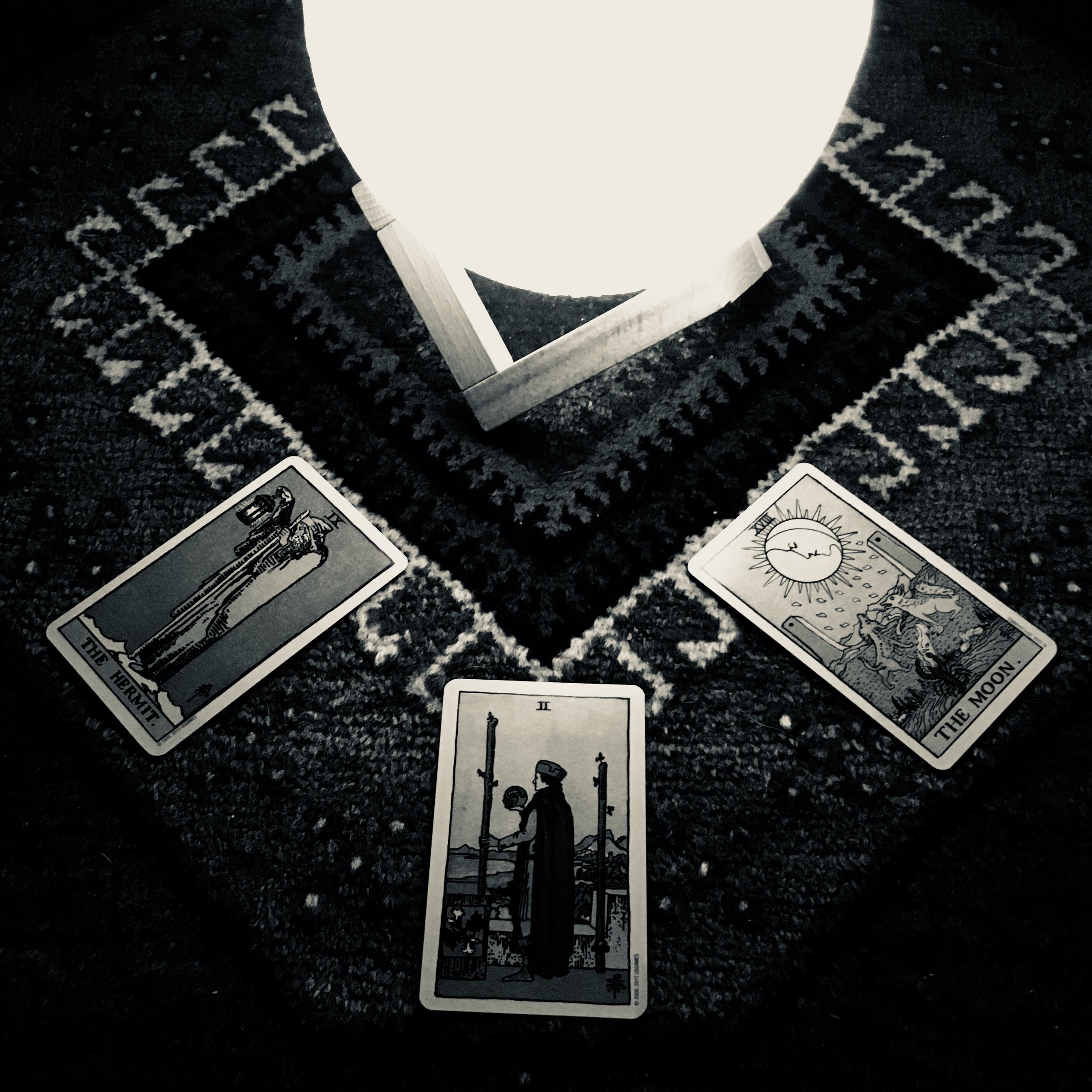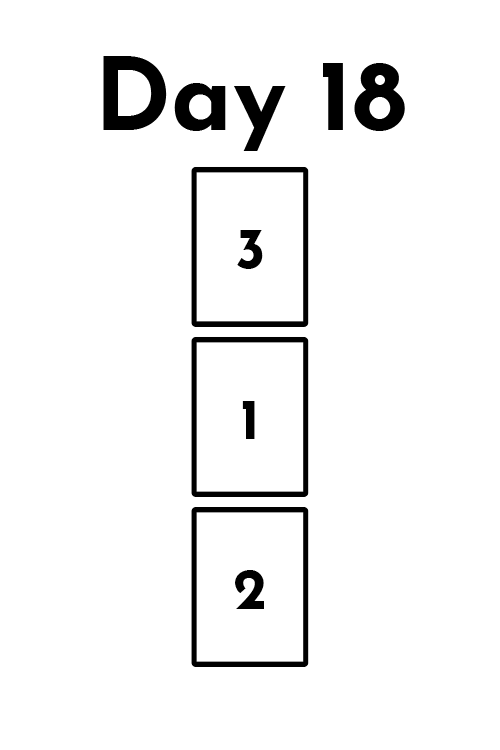Forecasting My Life Line: A 31-Day Divination Challenge
I See Learning In Your Future
If you’re here, I’m guessing you know that divination can be used to predict the future, among other things. It’s easy to think of tarot reading or tea leaf reading or casting charms as “simply fortune-telling.” That’s how it’s used in popular culture and, honestly, probably by most people. In a narrative, it’s interesting and relates to the (short-term) plot. In life, it can be reassuring, or it can give you permission or incentive to take certain actions.
But many well-meaning professionals make a point to not predict with their readings. (I typically have.) When you believe the future is yours to weave, it can seem silly (if not impossible) to predict anything. And if you’re reading for others, it can feel unethical or disempowering.
Now, if you don’t believe there’s value in prediction, then it would be unethical to sell predictive readings. More practically, it may not be supported by your payments processors or even by local laws. Instead, we use our craft for coaching or self reflection. That’s safe and understood as empowering and reliant on personal action.
But both methods are important. Learning to be comfortable with the predictive and forecasting method of divination can actually help you support personal development, which is ultimately the goal of coaching and self-reflection.
If you’re skeptical about that, know that I will be posting some of my own experiences along these lines over the coming weeks and months.
My goal as a divination coach is to make you a better diviner. I’ll be offering a three-month small group coaching program this fall where we focus on using tarot to transform your life. But in the meantime, I want to present this 31-day challenge to develop new divination and/or fortune-telling skills. It’s designed to help you learn a new system or learn how to use a familiar system in new ways. And it’s based on my own process for learning the Kipper system in preparation for creating the Seaborn Kipper, an upcoming deck co-created with Siolo Thompson.
You can support this work and “invest” in your own experience by buying the accompanying inexpensive, interactive PDF workbook/journal designed to help you keep track of your responses. Keeping track is very important to become a skilled and thoughtful diviner, predictive or otherwise.
But if you can’t afford the $3, then you don’t have to buy it to do the work. All the prompts are here for free!
Weeks 1 & 2: One-part readings
One-part readings allow you to focus and learn the basics of a divination system in a controlled environment. If you’re learning a new divination system, this will help you understand how the system works and “speaks” to you. But even if you’re using a familiar system, the questions should provide you with good insights about yourself and the system you know and love.
Week 1
In Week 1, we’re looking at one-part readings to become familiar with the system and meanings. If you’re using cards, you’ll pull a single card in response to each question to get to know that card better. If you’re using runes, pick one rune. If you’re casting charms, let just one tumble out. If you’re using bibliomancy, pick one sentence or word.
Day 1: How will this system communicate with me?
Day 2: How will it make use of my divinatory strengths?
Day 3: How will it challenge my divination skills?
Day 4: What new perspective can it provide?
Day 5: What can this system tell me about myself?
Day 6: How will this system help me connect more deeply with myself?
Day 7: What do I still need to know about this system?
Week 2
In Week 2, we’re looking at one-part readings to practice specificity and application, as well as reflecting on predictions. You’ll still be using one card, rune, charm, sentence or word, or whatever as the response to these questions to help build familiarity with the system and meanings while developing a fortune-teller’s specificity and practical application.
Day 8: What’s an idea or mindset that will help me to keep in mind today?
Day 9: What’s a specific event that will happen in the next 18 hours? (Verify or recalibrate after 18 hours.)
Day 10: What happened yesterday that I can confirm?
Day 11: What’s something that would be good to happen tomorrow?
Day 12: What’s my relationship to fortunetelling?
Day 13: When would it help me for my predictions to be right?
Day 14: When would it help me for my predictions to be wrong?
Weeks 3 & 4: Multi-part readings
Multi-part readings offer the chance for the individual parts to build upon each other. In divination, each part can answer a different question, but in traditional fortunetelling (cartomancy at least), each part can also provide a specific part of a single response. The questions or prompts for these weeks will allow you to practice various approaches.
These readings are designed from a cartomancy base because that’s my primary focus. It may be hard to organize other divination systems around “layouts” if they are not controlled objects such as cards, but it’s possible. Choosing sentences or words from a book can be done in sequence, even if they aren’t laid out in front of you. Identifying symbols in tea leaves can be done sequentially, even if the symbols are not arranged in the same spatial pattern as a card reading. You may be casting more runes or charms than there are parts, so the order in which they catch your eye may be more relevant than their positioning. But you might be able to map their positions onto the layout designs.
If you’re using the prompts as written with cards, try the associated layouts. They’re designed the way they are to help reflect the concepts behind the prompts or the traditions on which they’re based.
Week 3
In Week 3, we’re looking at three-part readings to practice building sequences and providing details. In divination, details are important to contextualize an abstraction into a real prediction, and sequence can imply cause and effect, which helps you take clearer action while also understanding the root cause of things.
You’ll be drawing, casting, or looking for three cards, runes, charms, symbols from tea leaves, sentences or words, or whatever else you’re using for divination. Days 15–17 and 19–20 use a simple left-to-right sequence. Day 18 uses a vertical layout instead.
Day 15: Tell me a story about a character using past experience (1), present state (2), and future plans (3).
Day 16: What’s something that happened to me in the past (1) that has affected a part of my present (2), and how can I use that to create in the future (3)?
Day 17: What is something that will happen in the next day (1)? What specifically about that is important (2)? And what will it impact (3)?
Day 18: What’s a situation I will encounter in the near future (1)? What do I need to know about what’s going on under the surface (2)? What do I need to keep in mind as the big picture (3)?
Day 19: Tell me about a character (1) who will do something (2) that leads to a specific outcome (3).
Day 20: Tell me something about a part of myself (1) that is impacting me in a certain way (2) and what effect that has on my life (3).
Day 21: What more do I need to understand about this system? (Decide for yourself how to interpret the three parts.)
Week 4
In Week 4, we’re looking at five-part readings to practice additional specificity and multi-angle interactions. You’ll be working with five cards, runes, symbols, and so on.
While each answers a specific question or provides a specific part of a response, the way that they interact as a whole is especially important. That’s because five parts provide enough dimension to see how the combined parts create a unique whole, how patterns flow in different directions, and how the end of a sequence folds back over the front to layer new meaning. It is not necessary to plan for such advanced mechanics during this challenge, but remember to look at the whole picture in addition to the finer details.
Day 22: Tell me a story about a character (1) with a defining trait (2) who does something (3) in a distinct way (4) that has a clear result (5).
Day 23: What’s an important topic from this past week (1) with a specific component or focus (2) that impacted me (3) in a certain way (4)? And what effect has it had (5)?
Day 24: What’s something that happened to me in the past (1) that has affected a part of my present (2), and how can I use that to create in the future (3)? What’s the root issue (4) and what happens if I can resolve it (5)?
Day 25: Pick something from your system to understand better, intentionally or randomly (1) and ask: What makes this challenging (2)? What opportunities does it provide (3)? What’s at the root of my confusion (4)? What will help me keep its lessons in mind (5)?
Day 26: What’s something fundamental to me that divination will help me see clearly (1)? What about that is hard to access otherwise (2)? How has that shown up as a problem (3)? What’s the ideal version of that (4)? And what is coming my way soon that will let me use that part of me to good effect?
Day 27: What’s a topic of study (1) that has an area of focus you want to know more about (2)? And how will it help you (3) in a particular way (4) to achieve a specific goal (5)?
Day 28: Why is divination valuable to me? (Decide for yourself how to interpret the five parts.)
Final Days: Looking at the Bigger picture
And in the final days of our challenge, we look at the big picture with a nine-part reading. These are big and multi-dimensional in a way that expands exponentially. Both days share the same layout.
Day 29: Tell me about a character (1) with a dream (2) and a dirty secret (3), who has an interesting back story (4–6) that has a likely future (7–9). What’s happening in their life now to lead them to that future (5–1–8)? To what do they expect to aspire (4–2–7)? And what unconscious needs are they trying to fulfill (6–3–9)?
Day 30: Tell me about a part of myself (1) that I wish to transform (2) but which is held back by something (3). What old narrative about myself am I letting affect this (4–6)? And what new story will I be able to tell if I focus on this part of myself (7–9)? What’s happening in my life now that lets me make the biggest impact (5–1–8)? What is my ideal outcome (4–2–7)? How can I transform my problems into powers (6–3–9)?
reflection & Fate-Weaving
Day 31: Think about what you’ve learned about your own future and divination. Write your future and keep it somewhere you can reference often.





